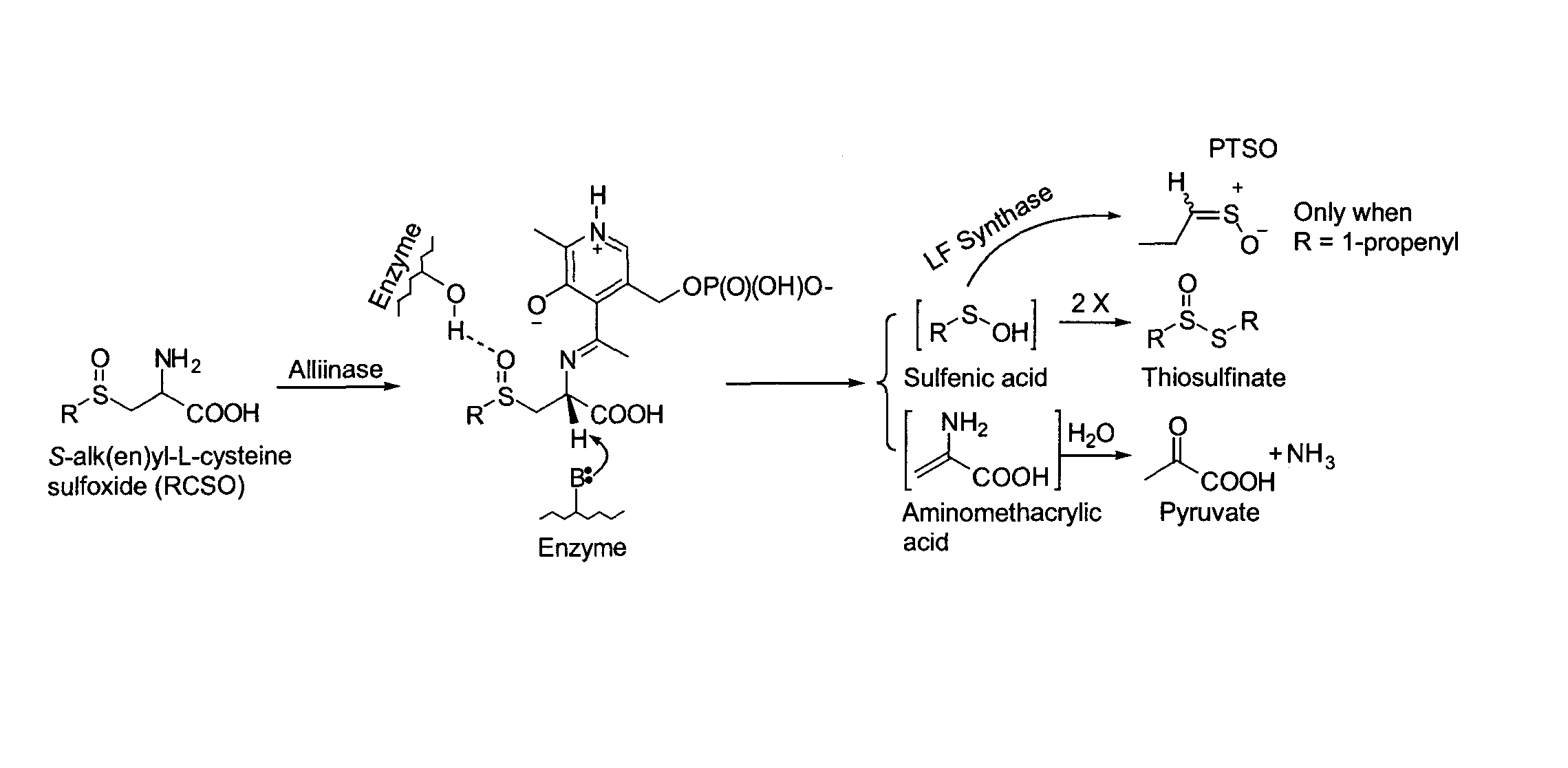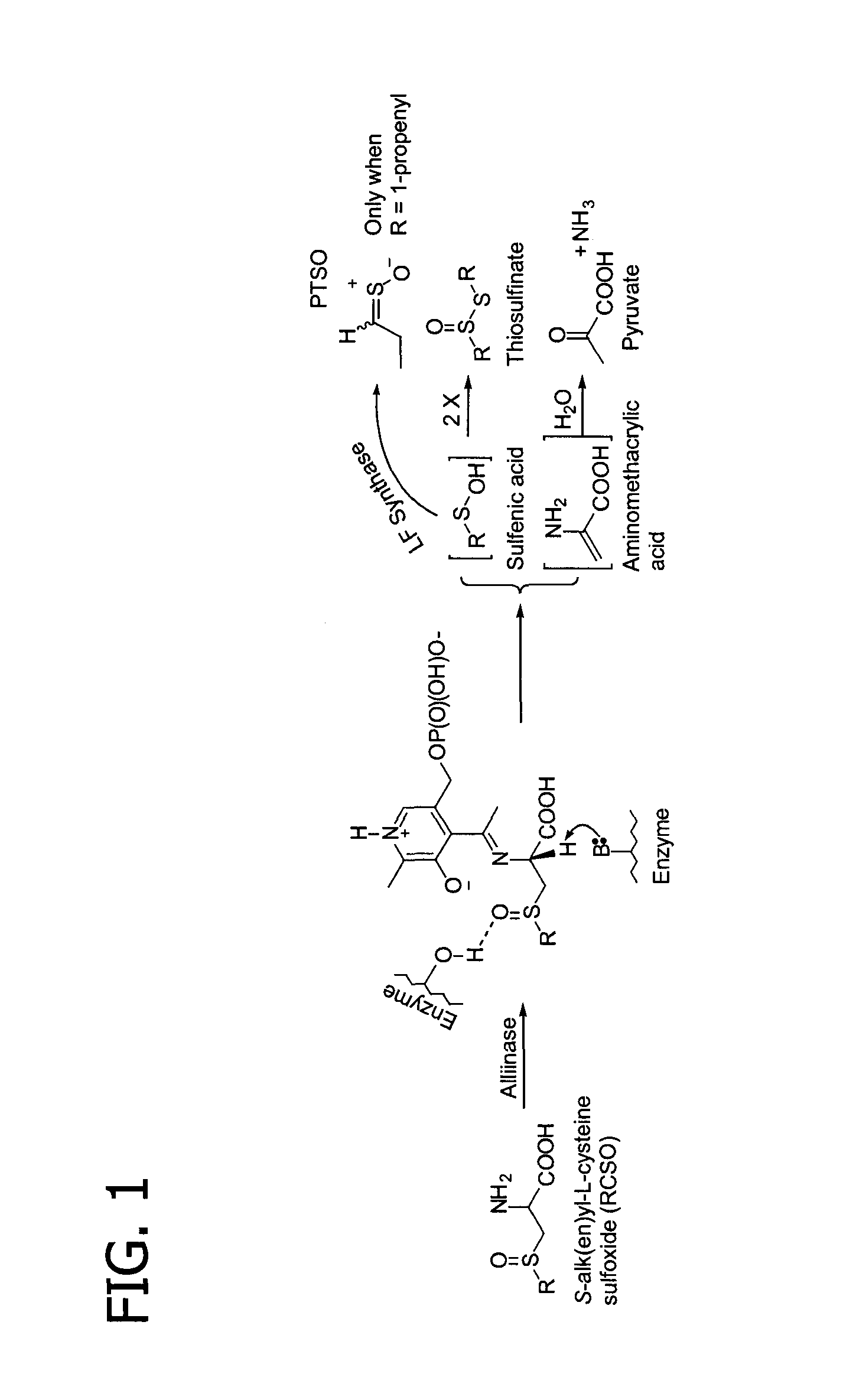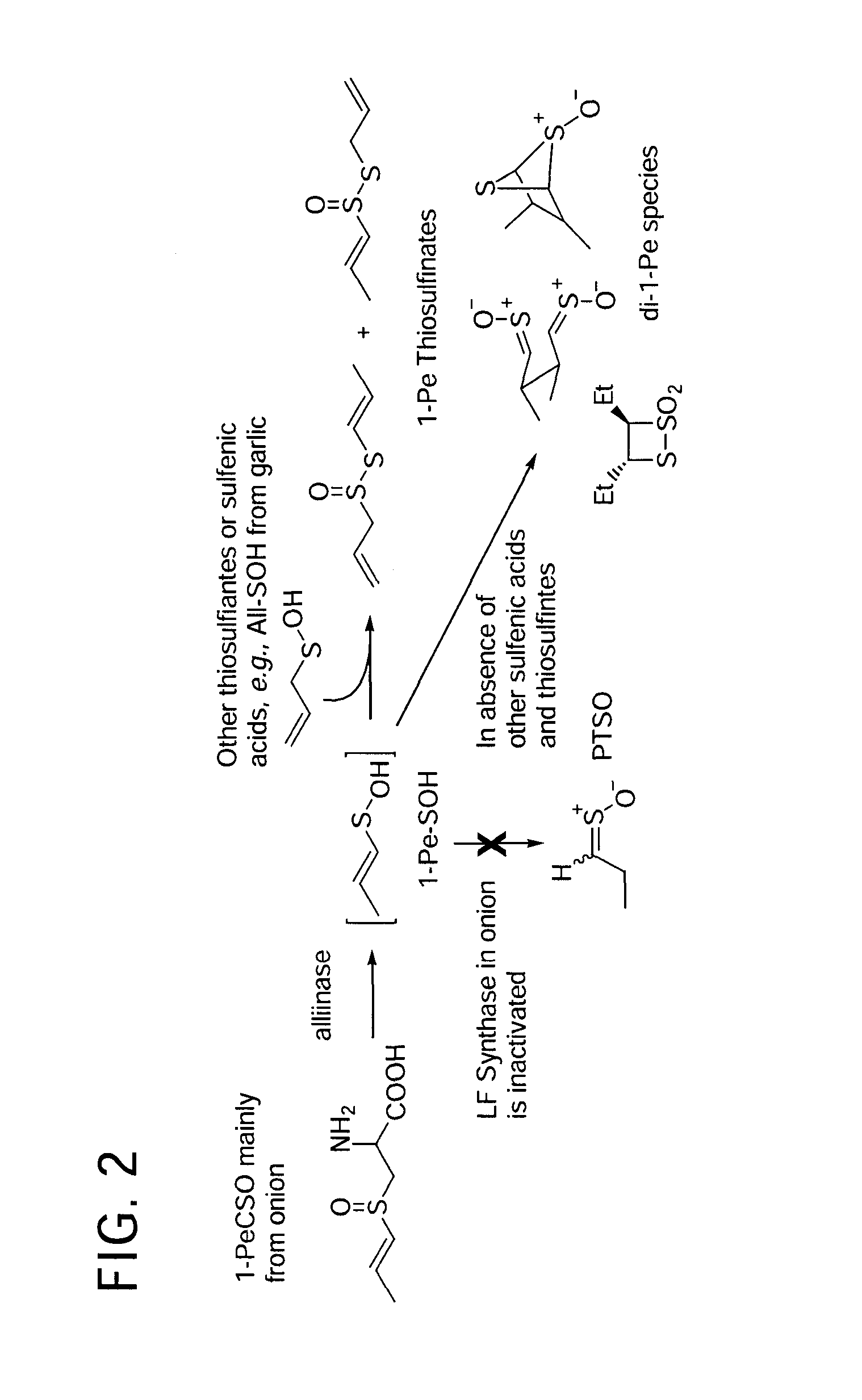Process of preparing conjugates of allium organosulfur compounds with amino acids, peptides, and proteins
a technology of allium organosulfur and conjugates, which is applied in the field of preparation of conjugates of allium organosulfur compounds with amino acids, peptides, and proteins, can solve the problems of lack of retention of organosulfur equivalents within the tissue matrix, and limited stability of thiosulfinates in these vegetables, so as to increase the anti-inflammatory effect in cells, reduce disease risk and increase phase 2
- Summary
- Abstract
- Description
- Claims
- Application Information
AI Technical Summary
Benefits of technology
Problems solved by technology
Method used
Image
Examples
example 1
[0079]In this Example, an alliinase-bearing tissue source for use in the process of the present disclosure is prepared.
[0080]Specifically, about 100 g garlic tissue is homogenized with 20 ml water with a mechanical blender or comminuting device at ambient (room) temperature. The homogenate is then incubated at ambient (room) temperature for 40 to 60 minutes, filtered through cheesecloth, and then extracted with an equal volume of organic solvent. This washed tissue extract has sufficient residual alliinase activity for further enzymatic generation of thiosulfinates from an added source of ACSO.
example 2
[0081]In this Example, onion bulbs are immersed in boiling water to inactivate alliinase / LF synthase as described in one embodiment of the processes of the present disclosure.
[0082]To begin, onion bulbs are quartered and the fleshy scales are separated in a manner to minimize tissue disruption. In some cases, it may be preferable to coarsely cut or prepare tissue for alliinase / LF synthase inactivation in a manner that maximizes surface area to facilitate heat transfer, while minimizing tissue disruption. Segments are placed in a boiling water bath, preferably at 95-100° C., preferably at a mass-volume ratio of 1:5 (typical range of 1:20 to 1:1) to afford rapid heat transfer and heat penetration into the tissue. After heat treatment for a prescribed period of time of up to 4 minutes, the tissue is cooled, homogenized with 0.5 volume of water (or preferably cooled heating water), allowed to incubate for 40 minutes after which thiosulfinate levels were measured by an N-ethylmaleimide c...
example 3
[0083]In this Example, onion bulbs are heated by microwave energy to inactivate alliinase / LF synthase as described in one embodiment of the processes of the present disclosure.
[0084]To begin, an onion bulb as in Example 2 and about 300 g tissue portions were placed in a compact domestic microwave for a prescribed period of time of 0-4 minutes. The tissue was cooled, homogenized with 0.5 volume of water, allowed to incubate for 40 minutes, after which thiosulfinate levels were measured by an N-ethylmaleimide colorimetric reagent as evidence of residual enzyme activity. Results in Table 5 show that heating under these conditions for at least 3 minutes is sufficient to deactivate residual alliinase / LF synthase activity. The residual thiosulfinate levels of ≦6% likely are caused by thiosulfinates and / or their thermal transformation products generated during the heating period, and sulfhydryl components in tissue that also test positive in this assay.
TABLE 5Effect of microwave heating on...
PUM
| Property | Measurement | Unit |
|---|---|---|
| temperature | aaaaa | aaaaa |
| time | aaaaa | aaaaa |
| time | aaaaa | aaaaa |
Abstract
Description
Claims
Application Information
 Login to View More
Login to View More - R&D
- Intellectual Property
- Life Sciences
- Materials
- Tech Scout
- Unparalleled Data Quality
- Higher Quality Content
- 60% Fewer Hallucinations
Browse by: Latest US Patents, China's latest patents, Technical Efficacy Thesaurus, Application Domain, Technology Topic, Popular Technical Reports.
© 2025 PatSnap. All rights reserved.Legal|Privacy policy|Modern Slavery Act Transparency Statement|Sitemap|About US| Contact US: help@patsnap.com



